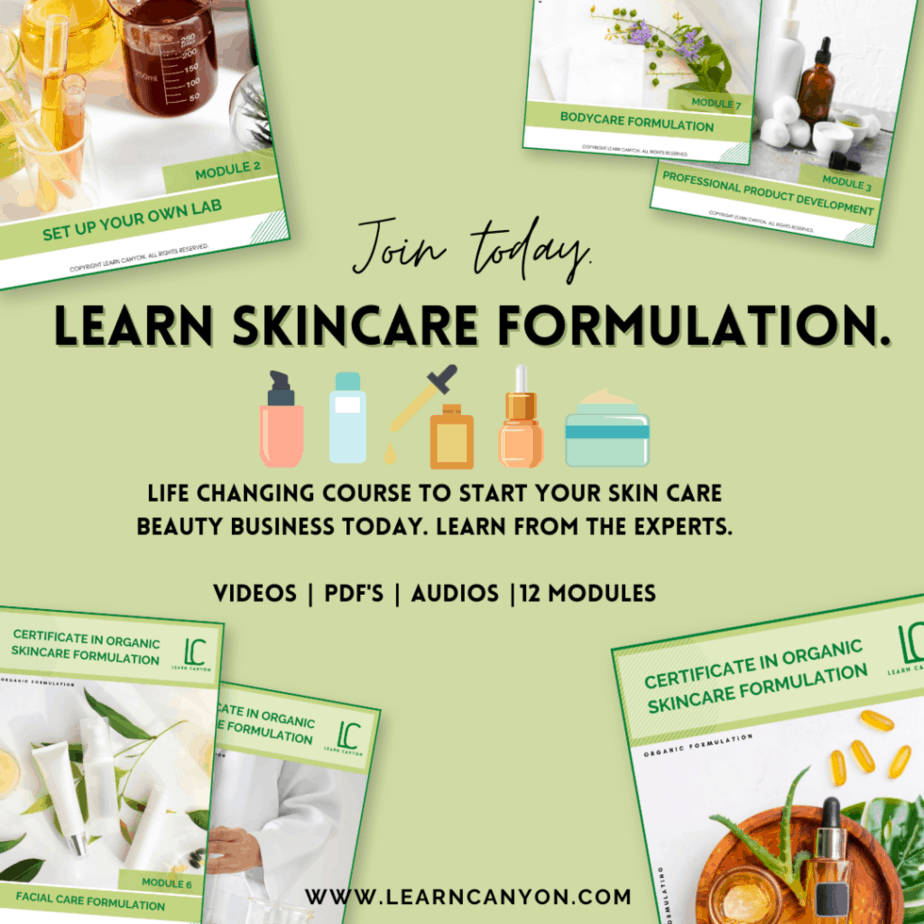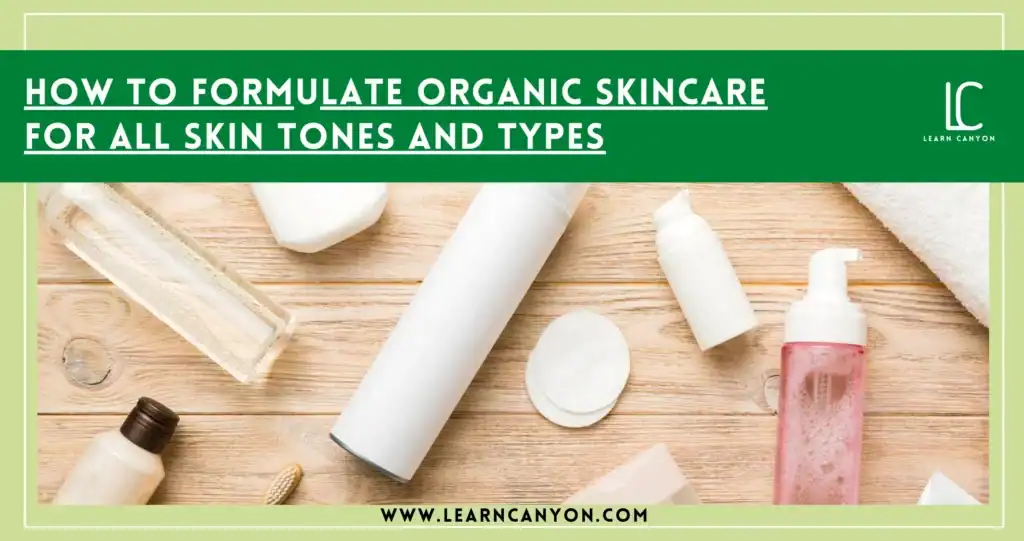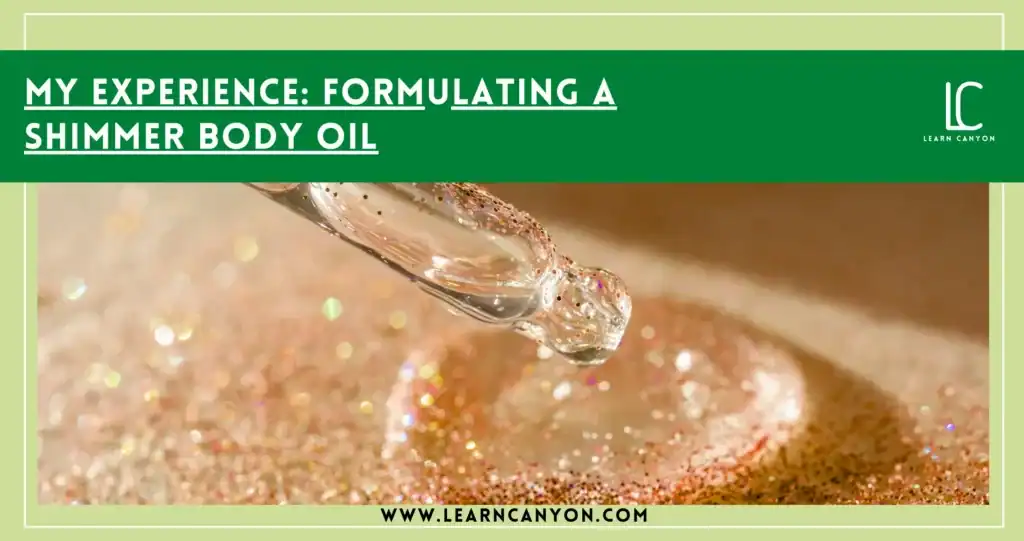Let’s face it, skincare hasn’t always been inclusive. For years, products were created with a “one-size-fits-all” mindset, often overlooking the rich spectrum of skin tones and the unique needs of different skin types. But today, as formulators and conscious creators, we have the responsibility, and the beautiful opportunity, to change that.
As someone who’s deeply passionate about organic formulation, I believe that skincare should honor every shade and skin story. Whether you’re working with dry, oily, sensitive, or melanin-rich skin, the right combination of nature-derived ingredients can create magic, gently, safely, and effectively.
In this blog, I’ll walk you through how to formulate skincare that doesn’t just work, but truly respects and celebrates diversity. We’ll explore skin tone vs. skin type, ingredient choices that suit each, formulation tweaks, and thoughtful tips for building inclusive products that people of all backgrounds can feel seen and supported by.
Let’s dive into the world of inclusive, organic skincare, where every skin tone and type is not only considered but celebrated.
Understanding Skin Diversity
Before we dive into oils, extracts, and all the juicy formulation details, let’s take a step back and talk about something foundational, skin diversity.
As a formulator, you’ve probably heard terms like skin tone and skin type used interchangeably. But here’s the thing: they’re not the same, and both deserve individual attention in your formulation process.
Let’s break it down:
Skin Tone
Skin tone refers to the amount of melanin present in the skin, and it ranges from very fair to deep rich hues. The Fitzpatrick Scale is a helpful tool here; it classifies skin into six categories based on how it reacts to sun exposure. But remember, tone isn’t just about color, it’s about how skin responds to ingredients, especially actives like AHAs, Vitamin C, or even essential oils. Melanin-rich skin, for instance, is more prone to hyperpigmentation and post-inflammatory responses. That means we must formulate gently, respectfully, and with barrier-supporting ingredients in mind.
Skin Type
Now, skin type is all about function. Is it producing excess sebum? Feeling parched and flaky? Sensitive to touch or products? The main skin types include:
- Oily
- Dry
- Combination
- Normal
- Sensitive
These types can appear across any skin tone. So yes, someone with deep-toned skin can have dry, sensitive skin, and someone with fair skin can be oily and acne-prone. That’s why inclusive formulation needs to go beyond what meets the eye.
True inclusive skincare isn’t just about offering “more shades” or slapping the word “for all” on your label. It’s about understanding the biology behind skin tone and the behavior of skin types, and then tailoring your formulations accordingly, using the gentlest and most effective organic ingredients.
As you create, keep asking yourself:
Who is this for? What does their skin truly need? And how can I support it with nature’s best?
Once you’re tuned into this mindset, your formulations won’t just be functional, they’ll be transformative.

Benefits of Using Organic Ingredients
Let’s talk about why I keep coming back to organic ingredients, formulation after formulation.
When you’re working with diverse skin tones and types, purity and gentleness become non-negotiables. The more I study skin biology, the more I realize how deeply it craves simplicity, especially when that simplicity comes straight from nature.
Organic ingredients aren’t just a trend, they’re a return to what works. They’re grown without synthetic pesticides, free from harsh chemicals, and rich in bioactive compounds that the skin recognizes and responds to beautifully.
Here’s why organic ingredients shine in inclusive skincare:
They’re inherently gentle.
Organic botanicals and oils are often less irritating compared to synthetic alternatives, making them perfect for sensitive skin types and melanin-rich skin, which can be more reactive to harsh actives.
They offer nutrient-rich nourishment.
Think of organic ingredients like cold-pressed rosehip oil or aloe vera juice, these aren’t just fillers. They’re loaded with vitamins, antioxidants, and enzymes that actively support the skin barrier and help balance different skin needs.
They’re adaptive and multi-functional.
Many organic ingredients, like jojoba oil or chamomile extract, work across skin types. That versatility is a formulator’s dream when you’re trying to create something that’s truly inclusive.
They align with conscious, clean beauty.
Today’s consumers care deeply about what they’re putting on their skin, and rightly so. Using certified organic, sustainably sourced ingredients builds trust and transparency into your brand from the very beginning.
They respect the skin’s microbiome.
This is huge. Organic ingredients tend to work in harmony with the skin’s ecosystem. That means less disruption, fewer flare-ups, and better long-term results, especially important when formulating for barrier-compromised or hyperpigmentation-prone skin.
At the end of the day, organic skincare isn’t about being “natural for the sake of it.” It’s about being intentional, thoughtful, and results-driven, with the cleanest, kindest ingredients available.
And as a professional formulator? There’s nothing more satisfying than watching your formulation nurture someone’s skin instead of merely treating it.
Star Organic Ingredients for Each Skin Type
Alright, now we’re getting into the heart of it, ingredients!
If you know me, you know I love a good ingredient profile. Why? Because the right combination of organic ingredients can literally transform a formula. And when you’re formulating for diverse skin types, choosing the right heroes is everything.
Each skin type speaks a different language, and as formulators, it’s our job to listen and respond thoughtfully. So here’s a curated list of star ingredients that I personally love (and use!) when tailoring skincare for specific skin types.
For Dry Skin: Deep Nourishment & Barrier Repair
Dry skin craves rich, occlusive ingredients that seal in hydration and replenish lost lipids.
- Shea Butter – High in fatty acids and vitamin E, it restores elasticity and deeply nourishes.
- Avocado Oil – A heavier oil loaded with oleic acid and antioxidants. Great for overnight repair.
- Oat Extract or Oat Milk – Soothes irritation and provides gentle moisture with a soft feel.
- Marshmallow Root Extract – Hydrates while calming inflammation and flakiness.
Tip: Blend shea butter with a touch of jojoba oil for a deeply moisturizing but non-greasy finish.
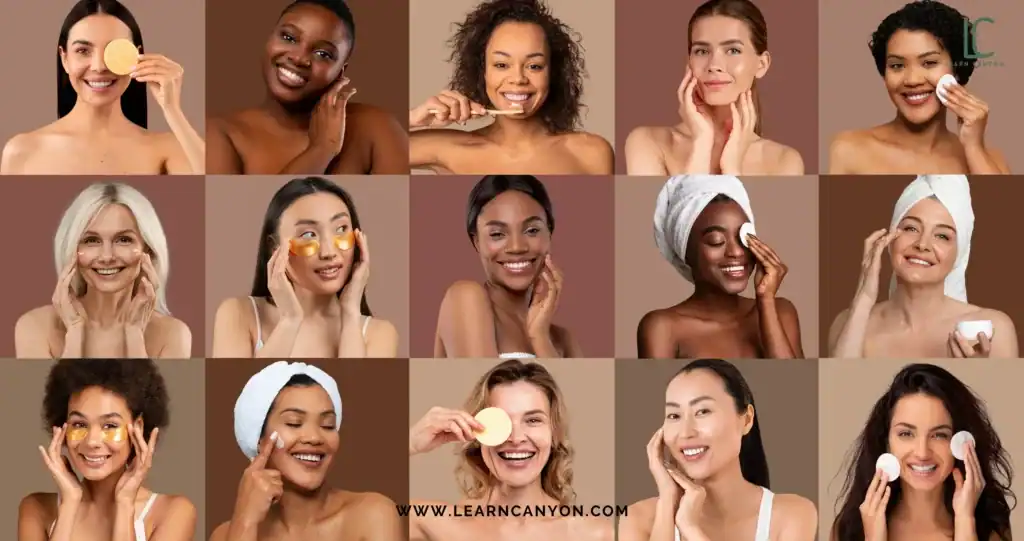
For Oily or Acne-Prone Skin: Balance & Clarity
The goal here is to reduce excess oil, clarify pores, and calm inflammation without stripping the skin.
- Jojoba Oil – Technically a wax ester, it mimics skin’s natural sebum and helps balance oil production.
- Green Tea Extract – Antibacterial, antioxidant, and anti-inflammatory. A total triple threat.
- Neem Oil – Powerful antibacterial properties, but best used in small amounts due to its scent.
- Witch Hazel Hydrosol – Gently astringent and pore-refining without being harsh.
Tip: Use light emulsions or gels with clarifying botanicals for a non-comedogenic finish.
For Sensitive or Reactive Skin: Soothe & Strengthen
This skin type is easily irritated, so formulating requires a featherlight touch and barrier-loving ingredients.
- Chamomile Extract – Calms redness and reduces irritation; perfect for delicate skin.
- Aloe Vera Juice – Hydrating, soothing, and full of polysaccharides to repair the barrier.
- Cucumber Extract – Cooling and gentle with natural anti-inflammatory properties.
- Calendula Infusion – One of my absolute favorites for healing and calming stressed skin.
Tip: Stick to fragrance-free or use only skin-safe essential oils in tiny amounts, less is more here!
For Combination Skin: Harmonize & Hydrate
This skin type needs balance, think of it as a little bit oily and a little bit dry in different areas.
- Jojoba Oil – Balances sebum, suitable for all zones.
- Rose Hydrosol – Hydrating and toning, works beautifully for both dry and oily areas.
- White Tea Extract – Lightweight and antioxidant-rich, great for balancing complexion.
- Niacinamide (vitamin B3) – While not plant-derived, it’s perfect for restoring balance, just make sure it’s paired with organic bases.
Tip: Emulsions or light creams that hydrate without clogging are best for this skin type.
For Mature or Melanin-Rich Skin: Brighten, Protect & Restore
Both skin types benefit from antioxidant-rich, barrier-strengthening ingredients that target pigmentation and fine lines gently.
- Bakuchiol – A natural, non-irritating alternative to retinol, amazing for tone and texture.
- Licorice Root Extract – Helps fade dark spots and reduce hyperpigmentation.
- Sea Buckthorn Oil – Rich in carotenoids and omega 7, perfect for glow and repair.
- Tamanu Oil – Healing, regenerative, and rich in fatty acids, but use it sparingly due to its strong scent.
Tip: Formulate with emollient-rich bases and include humectants like hyaluronic acid for added hydration and plumpness.
Every skin type deserves to be loved just as it is, and as a formulator, your job is to meet that skin exactly where it’s at, with the purest, most effective ingredients nature has to offer.
Choosing Actives with Caution
So actives can make or break a formulation.
They’re the superheroes of skincare: brightening dark spots, smoothing fine lines, calming inflammation, hydrating like nothing else. But as powerful as they are, actives also need to be respected. Especially when you’re creating skincare for diverse skin tones and types.
Different skin tones, particularly deeper, melanin-rich skin, can react differently to actives. Post-inflammatory hyperpigmentation (PIH), irritation, or barrier disruption happens way too often when actives are used carelessly.
So, let’s talk about how to be both effective and gentle.
Understand Skin Sensitivity Levels
Not all skin handles actives the same way.
Sensitive skin or darker skin tones tend to be more reactive to high-strength acids, retinoids, or harsh exfoliants. So when formulating, your mindset should be:
“What’s the least amount of active I can use while still seeing results?”
Safe, Skin-Loving Alternatives to Common Actives
Here are some of my go-to swaps and smart uses:
- Instead of Retinol → Try Bakuchiol
Retinol can be too intense for sensitive or melanin-rich skin. Bakuchiol is a plant-based alternative that delivers similar benefits without irritation or photosensitivity. - Instead of Strong AHAs (like glycolic acid) → Use Lactic Acid or Fruit Enzymes
These are gentler exfoliants that help resurface the skin while being kinder to the barrier. - Vitamin C? Choose the Right Form!
While L-ascorbic acid is popular, it’s highly unstable and often irritating. I prefer Sodium Ascorbyl Phosphate or Magnesium Ascorbyl Phosphate, more stable, effective, and gentle. - Niacinamide (Vitamin B3)
A rockstar ingredient that supports all skin types and tones. Great for brightening, balancing oil production, and strengthening the barrier, just keep it between 2–5% to avoid sensitivity. - Azelaic Acid (or Organic Extract Alternatives like Licorice Root)
Excellent for calming inflammation, fading pigmentation, and being safe across skin tones.
Formulation Tips for Using Actives Wisely
- Mind your pH – Some actives (like acids or Vitamin C) need a specific pH to be effective, but going too low can irritate the skin. Always check compatibility!
- Don’t overload – More actives ≠ better results. In fact, too many can confuse the skin and trigger reactions.
- Layer support ingredients – Pair strong actives with calming ingredients like aloe, panthenol, allantoin, or oat extract.
- Stability matters – Actives need to be stable in your formulation. Otherwise, they oxidize or degrade and may irritate instead of help.
Real Talk from the Lab
Every time I formulate a product with actives, I remind myself: “This is going on someone’s face. Their confidence. Their story.”
We’re not just crafting skincare, we’re creating trust. And trust starts with thoughtful, safe, and inclusive choices.
So, go slow. Be intentional. Choose quality over quantity.
Formulation Considerations
Now that we’ve talked ingredients and actives, let’s dive into the real craft of formulation, where textures, stability, and functionality come together.
Because let’s be honest, you can have the most beautiful ingredient list in the world, but if your formula feels greasy, separates in the jar, or doesn’t absorb well across skin types… it’s not going to land.
So how do we create organic formulations that actually perform, on every skin type and tone?
Let’s break it down.
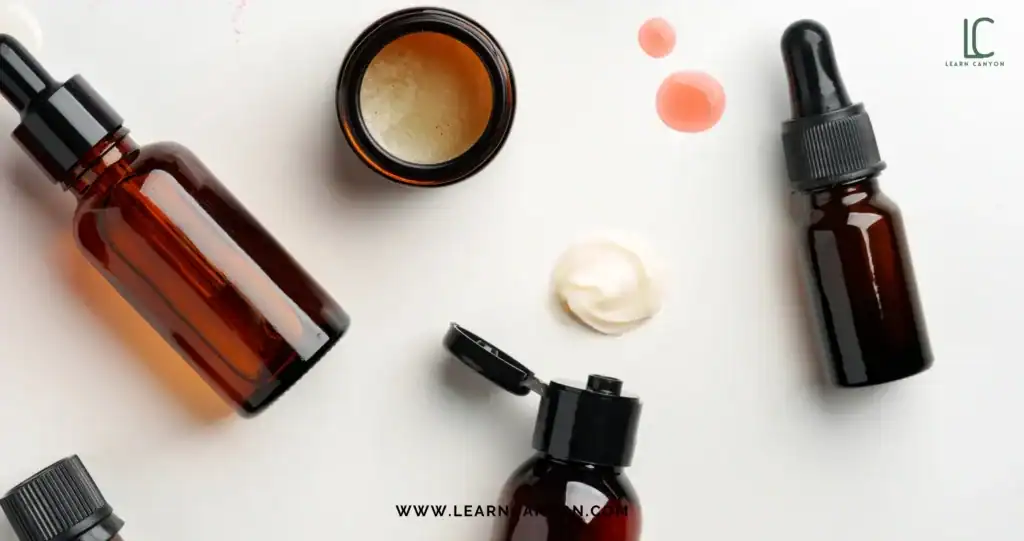
Texture Matters (More Than You Think)
Different skin types prefer different textures.
- Oily or acne-prone skin? Lightweight gels, fluids, or emulsions with a matte finish work best.
- Dry or mature skin? Creams and balms that melt into the skin feel luxurious and deeply comforting.
- Melanin-rich skin often benefits from non-comedogenic oils and barrier-supportive emollients that don’t leave a heavy white cast.
Tip: Always test your formula on a range of skin tones to check how it looks and feels. Ashiness or stickiness is a no-go.
Emulsifiers for Inclusive Formulations
Emulsifiers aren’t just about blending oil and water, they affect the spreadability, absorption, and finish.
Some great options for organic or green formulations include:
- Olivem 1000 – Soft, creamy textures with excellent skin feel
- Montanov™ 68 or L – Biodegradable and super versatile
- Lecithin or Sugar Esters – Great for more minimalist, gentle formulations
Be sure to pair emulsifiers with thickeners or stabilizers (like xanthan gum or cetyl alcohol) to maintain stability in humid or tropical climates.
3️⃣ Preservation is Protection
Let me say it loud: preservation is non-negotiable, especially when you’re working with diverse skin tones and sensitive types.
The goal is to choose preservatives that are:
- Broad-spectrum
- Compatible with natural formulations
- Effective at low concentrations
Some safe options:
- Geogard Ultra or ECT (Ethylhexylglycerin + Caprylyl Glycol)
- Gluconolactone & Sodium Benzoate (for sensitive skin formulas)
- Leucidal® SF Complete (paired with a chelator like Sodium Phytate)
Priya’s Tip: Avoid under-preserving in the name of being “natural.” A spoiled product is far more harmful than a well-preserved one.
Climate Considerations
Where your product is used matters. A buttery balm that’s perfect for Canada might melt into soup in St. Lucia.
Always consider:
- Temperature sensitivity
- Water activity in your formula
- Packaging choices (airless pumps = besties for emulsions!)
Inclusive Skin Feel
This is huge when formulating for all skin tones. Heavy butters or mineral-rich ingredients like zinc oxide can leave a cast on deeper skin, so always blend in light-diffusing oils or use micronized versions of pigments and minerals.
Pro Hack: Test your formulas on multiple skin tones. What looks glowy on one tone may look chalky or greasy on another.
At the end of the day, formulation is a balance between art and science.
It’s about creating something that feels good, works beautifully, and welcomes everyone to the table.
Color and Scent in Inclusive Formulations
Let’s talk about the vibe of your product, the first thing your customer sees and smells, even before they apply it to their skin.
Color and scent are powerful. They create emotional connections, elevate the user experience, and can even build brand identity. But when it comes to inclusive skincare, they also require a little extra thought, because what looks or smells good isn’t always universal or suitable for all skin tones and types.
So let’s get into how to work with color and scent thoughtfully and professionally.
Color:
In organic skincare, we often let the ingredients speak for themselves, the golden hue of sea buckthorn, the green tint of matcha, or the soft pink from rose clay. But sometimes, you might want to adjust or enhance the appearance.
Here’s what to keep in mind:
- Avoid mineral pigments that leave a cast, Zinc oxide, titanium dioxide, and some clays can appear chalky, especially on deeper skin tones. Use micronized or tinted versions if needed.
- Embrace botanical infusions, Herbs like hibiscus, turmeric, calendula, and butterfly pea flower offer beautiful, natural hues.
- Be mindful of oxidation, Some natural ingredients change color over time. Stabilize them with antioxidants and smart packaging.
- Test across skin tones, That pale cream might look luxurious in a jar, but does it leave a white film when applied on deep-toned skin? Always check!
Priya’s Tip: If a product’s purpose is function, don’t force color for aesthetics. But if you do add color, make sure it enhances all skin tones, not just some.
Scent:
Ah, scent. It’s where the emotional magic happens, but also where many formulators go wrong. What smells like a refreshing dream to one person can be overwhelming or irritating to another.
Here’s how I approach scent as a conscious formulator:
- Use essential oils sparingly, Especially on sensitive or melanin-rich skin, high percentages of EOs can trigger irritation or PIH. Stick to dermal limits and use only skin-safe oils.
- Skip synthetic fragrances if possible, They’re common allergens and don’t align with your organic positioning.
- Work with natural aromatic extracts, CO2 extracts, floral waters, and absolutes can add gentle, sophisticated scent notes.
- Create universally calming blends, Think lavender + sandalwood, neroli + sweet orange, rose + frankincense. These have wide appeal and support the skin too.
Priya’s Tip: Always patch-test scented formulations and label them clearly. And for ultra-sensitive formulas? Sometimes, unscented is the most luxurious choice.
Real Talk from the Lab
When I create a formula, I don’t just ask:
“Does this look pretty?” or “Does this smell nice?”
I ask: “How will this make someone feel when they apply it on their skin, no matter their tone or sensitivity level?”
Because true luxury is about comfort, confidence, and care, and that’s what inclusive skincare is all about.
Cultural Relevance in Skincare
Let’s take a moment to zoom out.
Beyond skin types, tones, and actives, there’s something just as important in formulation, respecting where our ingredients come from, and who they’ve served long before us.
As a professional formulator (and a proud advocate of Ayurvedic traditions myself), I believe skincare is not just science, it’s storytelling. Every herb, oil, butter, or extract we use has a history. A lineage. A culture attached to it. And when we choose to work with these ingredients, especially from global traditions, we have a responsibility to approach them with respect, knowledge, and integrity.
Ingredient Origins Matter
Think of turmeric, neem, shea butter, argan oil, or tamanu. These are not just trendy “natural” ingredients, they’re powerful botanicals deeply rooted in healing practices from India, Africa, Southeast Asia, and the Pacific Islands.
So instead of just using these ingredients because they’re “hot” in the clean beauty space, ask yourself:
- Do I understand the traditional uses and cultural context of this ingredient?
- Am I sourcing it ethically, in a way that gives back to the communities it comes from?
- Have I acknowledged its origin somewhere in my brand or formulation story?
Honor the Heritage, Don’t Just Harvest
Inclusive skincare doesn’t stop at representation on skin tones. It also means honoring the cultures that shaped natural healing and beauty long before it was bottled and sold.
So if you’re using Ayurvedic ingredients, acknowledge Ayurveda.
If you’re formulating with African botanicals, honor the traditional uses and local communities.
If your inspiration came from indigenous practices, give credit, don’t just commercialize.
Priya’s Tip: Partner with local farmers, cooperatives, and small-batch producers when sourcing. It’s one of the most meaningful ways to ensure your formulations are truly rooted in purpose.
Celebrate Diversity Through Formulation
When we take the time to understand the cultural significance of the ingredients we work with, we elevate our craft.
We move from “making skincare” to “creating connection.”
We empower people from different walks of life to feel seen, not just in the products we offer, but in the stories we share.
From one formulator to another: The deeper your roots in knowledge and respect, the stronger and more beautiful your creations will be. This is how we build truly inclusive, conscious skincare, not just from the outside in, but from the inside out.
Sample Starter Formulation Ideas
Now that we’ve explored the foundations of inclusive skincare, from understanding skin diversity to ingredient selection and cultural relevance, it’s time to bring it all together.
And what better way to do that than with some starter formulation ideas?
These aren’t just random recipes. They’re thoughtfully crafted blueprints designed to work across a wide range of skin tones and types. Each one highlights the gentle power of organic ingredients, cultural sensitivity, and performance-driven formulation. Let’s dive in.
1. Calming Chamomile Gel – For Sensitive & Reactive Skin
Why it works:
This soothing gel is packed with calming botanicals and gentle hydration. It’s perfect for redness-prone or sensitive skin, no matter the skin tone.
Hero ingredients:
- Aloe vera juice (base)
- Chamomile hydrosol
- Glycerin
- Calendula extract
- Allantoin (natural alternative like comfrey root or allantoin-rich botanical infusion)
- Preservative (e.g., Geogard Ultra or Leucidal Complete)
Tip: Keep it fragrance-free or use a tiny amount of chamomile CO2 extract for a soft natural scent.
2. Brightening Turmeric & Licorice Cream – For Melanin-Rich or Dull Skin
Why it works:
Targets hyperpigmentation and uneven tone with ingredients known for their brightening yet barrier-loving effects.
Hero ingredients:
- Organic shea butter + jojoba oil (emollient base)
- Turmeric extract (liposomal or oil-soluble version to avoid staining)
- Licorice root extract
- Niacinamide (at 2-3%)
- Aloe vera
- Natural preservative system
- Montanov 68 for a creamy texture
Tip: Add a tiny bit of sea buckthorn oil to give a golden glow without altering the color drastically.
3. Hydrating Hibiscus & Aloe Lotion – For All Skin Types
Why it works:
Lightweight, hydrating, and universally loved. This lotion delivers deep moisture without heaviness and leaves no cast.
Hero ingredients:
- Aloe vera juice
- Hibiscus extract or infusion
- Hyaluronic acid (or a plant-based humectant blend)
- Apricot kernel oil
- Olivem 1000 or Montanov L
- Vitamin E
- Preservative (Ecocert-approved)
Tip: Test this on oily, dry, and combination skin. It adapts beautifully depending on what’s layered beneath or above it.
4. Barrier Repair Balm – For Dry, Mature & Sensitive Skin
Why it works:
Rich, healing, and perfect for restoring the skin barrier, especially in colder or drier climates.
Hero ingredients:
- Shea butter
- Tamanu oil
- Rosehip oil
- Calendula infused oil
- Beeswax or candelilla wax (for a vegan version)
- Vitamin E
- Optional: a drop of lavender or sandalwood essential oil (skin-safe amounts)
Tip: Melt your butters slowly and stir constantly to prevent grittiness. Let it cool gradually for a smooth finish.
These are just jumping-off points. Use them, tweak them, infuse them with your own creativity and intention. Formulation is never one-size-fits-all, and that’s the magic of it.
When you craft with inclusivity in mind, you’re not just making skincare, you’re making people feel seen, safe, and celebrated. And that, my friend, is what makes a truly unforgettable formula.
Pro Tips for Inclusive Product Development
Now that we’ve covered formulation from the inside out, let’s talk about what happens outside the lab, where your product meets real people with real skin, real stories, and real expectations.
Creating inclusive skincare isn’t just about choosing the right ingredients. It’s about developing with intention, testing with empathy, and marketing with honesty. Here are some pro tips I swear by, ones I’ve learned through my own wins, fails, and beautiful lessons as a formulator and educator.
1. Test on a Variety of Skin Tones and Types
I can’t stress this enough.
Test your products on people with different undertones, textures, and skin concerns. What absorbs beautifully on fair, oily skin might feel heavy or leave a white cast on deeper, drier skin.
Inclusivity starts with testing, not assumptions.
Tip: If you’re just starting out, reach out to your community, friends, or volunteers. Create a diverse testing panel. It’s worth every effort.
2. Listen, Don’t Just Launch
Before finalizing your product, ask for feedback, not just on performance, but also on texture, scent, how it feels, how it looks, how it fits into their routine.
You’d be surprised how much insight comes from listening, not just formulating.
3. Packaging Matters, A Lot
Inclusive packaging isn’t just about aesthetics.
- Use airless pumps for better hygiene and shelf life.
- Avoid jars without spatulas for sensitive-skin products.
- Choose neutral, accessible labeling that doesn’t imply skin hierarchy (phrases like “for fairer skin” are a definite no).
- And for makeup or tinted skincare, offer a wider shade range, even if you start with 3-5 core tones.
4. Language is Powerful
The way you describe your product is just as important as how you formulate it. Avoid words that suggest one skin type or tone is a problem to be fixed.
Instead of “corrects dark skin”, say “brightens dullness.”
Instead of “for problem skin”, say “for breakout-prone or sensitive skin.”
Let your copy uplift, not shame.
Tip: Inclusive brands speak kindly, not just to the skin, but to the people who live in it.
5. Celebrate Representation
If you’re showing your product in use (on your website, socials, packaging, etc.), feature a mix of skin tones, genders, and ages.
People want to see themselves in your brand, and when they do, they feel like it was made for them. And honestly? That’s the whole point.
Formulating for everyone doesn’t mean diluting your message, it means deepening your impact.
As a formulator, you have the power to make people feel beautiful, safe, and included, not just through your ingredients, but through the choices you make at every stage of product development.
So go ahead. Create with heart. Test with care. Share with love.
And remember, inclusive skincare isn’t a trend. It’s a standard we should all be proud to uphold.

